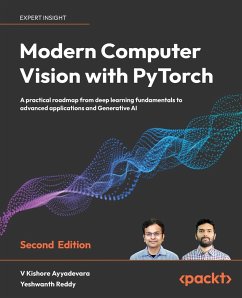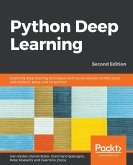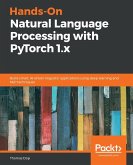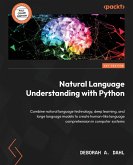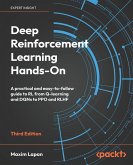The definitive computer vision book is back, featuring the latest neural network architectures and an exploration of foundation and diffusion models Purchase of the print or Kindle book includes a free eBook in PDF format Key Features - Understand the inner workings of various neural network architectures and their implementation, including image classification, object detection, segmentation, generative adversarial networks, transformers, and diffusion models - Build solutions for real-world computer vision problems using PyTorch - All the code files are available on GitHub and can be run on Google Colab Book Description Whether you are a beginner or are looking to progress in your computer vision career, this book guides you through the fundamentals of neural networks (NNs) and PyTorch and how to implement state-of-the-art architectures for real-world tasks. The second edition of Modern Computer Vision with PyTorch is fully updated to explain and provide practical examples of the latest multimodal models, CLIP, and Stable Diffusion. You'll discover best practices for working with images, tweaking hyperparameters, and moving models into production. As you progress, you'll implement various use cases for facial keypoint recognition, multi-object detection, segmentation, and human pose detection. This book provides a solid foundation in image generation as you explore different GAN architectures. You'll leverage transformer-based architectures like ViT, TrOCR, BLIP2, and LayoutLM to perform various real-world tasks and build a diffusion model from scratch. Additionally, you'll utilize foundation models' capabilities to perform zero-shot object detection and image segmentation. Finally, you'll learn best practices for deploying a model to production. By the end of this deep learning book, you'll confidently leverage modern NN architectures to solve real-world computer vision problems. What you will learn - Get to grips with various transformer-based architectures for computer vision, CLIP, Segment-Anything, and Stable Diffusion, and test their applications, such as in-painting and pose transfer - Combine CV with NLP to perform OCR, key-value extraction from document images, visual question-answering, and generative AI tasks - Implement multi-object detection and segmentation - Leverage foundation models to perform object detection and segmentation without any training data points - Learn best practices for moving a model to production Who this book is for This book is for beginners to PyTorch and intermediate-level machine learning practitioners who want to learn computer vision techniques using deep learning and PyTorch. It's useful for those just getting started with neural networks, as it will enable readers to learn from real-world use cases accompanied by notebooks on GitHub. Basic knowledge of the Python programming language and ML is all you need to get started with this book. For more experienced computer vision scientists, this book takes you through more advanced models in the latter part of the book. Table of Contents - Artificial Neural Network Fundamentals - PyTorch Fundamentals - Building a Deep Neural Network with PyTorch - Introducing Convolutional Neural Networks - Transfer Learning for Image Classification - Practical Aspects of Image Classification - Basics of Object Detection - Advanced Object Detection - Image Segmentation - Applications of Object Detection and Segmentation - Autoencoders and Image Manipulation - Image Generation Using GANs (N.B. Please use the Read Sample option to see further chapters)
Hinweis: Dieser Artikel kann nur an eine deutsche Lieferadresse ausgeliefert werden.
Hinweis: Dieser Artikel kann nur an eine deutsche Lieferadresse ausgeliefert werden.

